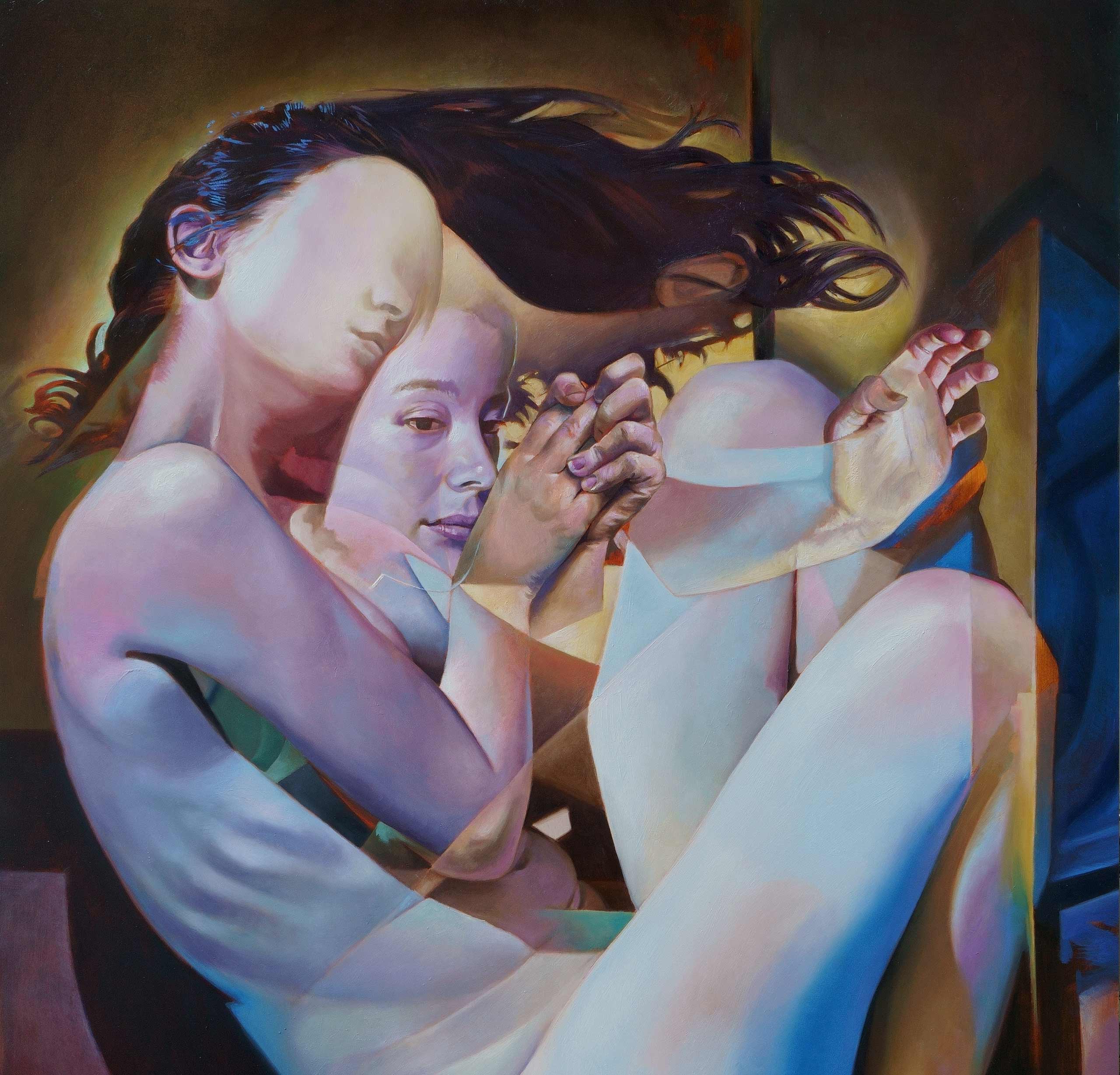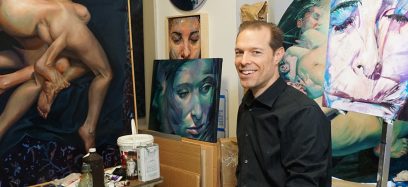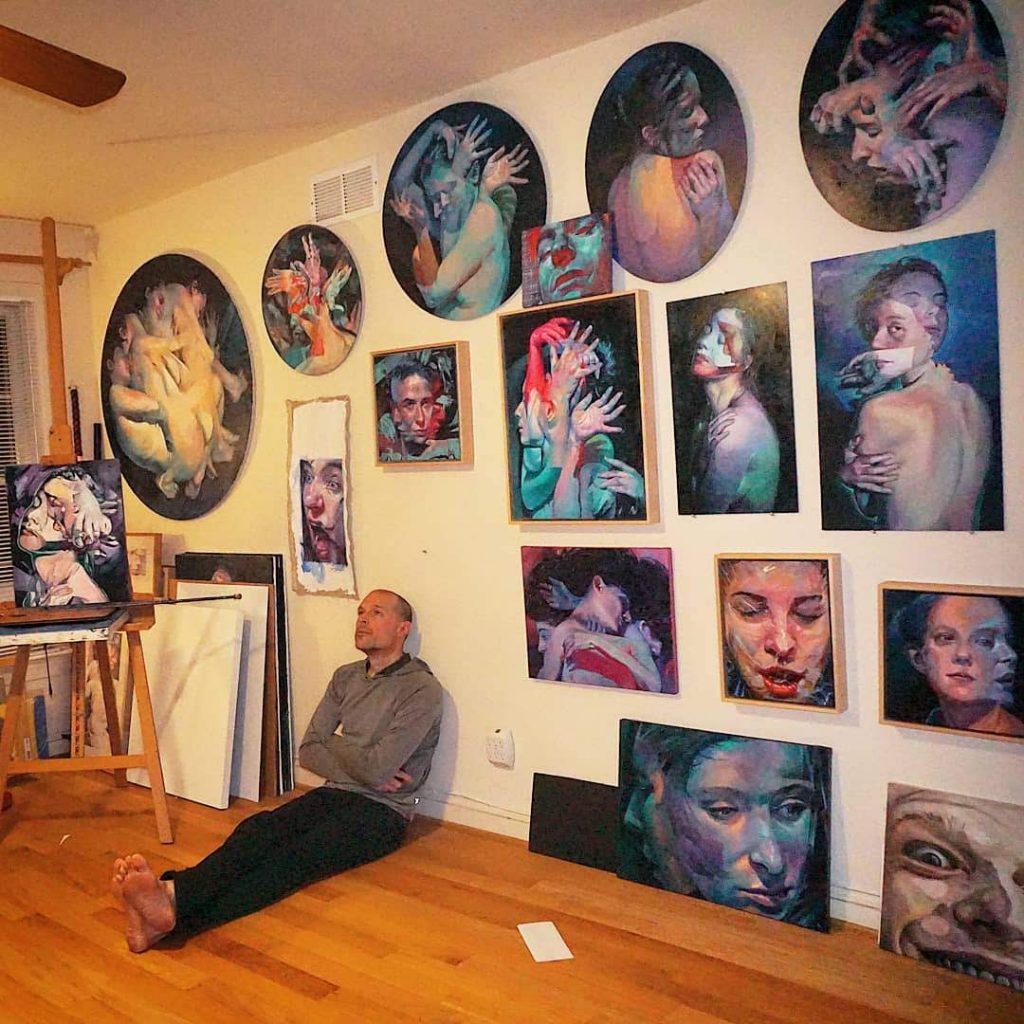
I wanted to thank all the students out there that have emailed me over the years regarding my art and life. I am grateful to every question and I thought I would put together a ‘frequently asked’ list below.
This list will continue to grow as more questions come up. therefore, this list is in no way complete, so if you have any questions that are not listed here, don’t hesitate, I can be reached on my contact page here.
1) When were you born?
I was born April 9th, 1973, in Indianola Iowa. USA
2) Where did you receive your eductional training?
BFA at Drake University in Des Moines Iowa
MFA at Geogewashington University in Washington DC
3) What type of artist are you?
The style of work I create has changed a lot over the years (timeline), however I have always been a figurative artist. Currently, I would say my work is a hybrid between imaginative realism, futurism, and metaphysical surrealism.
4) Did something in particular inspire you to become an artist?
When I was 12 I saw a painting by Francis Bacon Study after Velasquez’s Portrait of Pope Innocent X. I had experienced such a deep emotion looking at that painting. His painting haunted me so deeply that I am still painting imagery today that evokes his particular aesthetic. I wonder if I am continually chasing that same emotion/feeling I felt looking at Francis Bacon’s painting.
5) Where and when did you develop your style?
I am asked this a lot. I can see my “style” even in the early stages of my education; however my style developed incrementally over many years. In that way, my style has taken my whole life to develop. If I were to quantify when and where I was most influenced, I would have to say at Drake University. (Undergraduate School) I received the most rigorous training there.
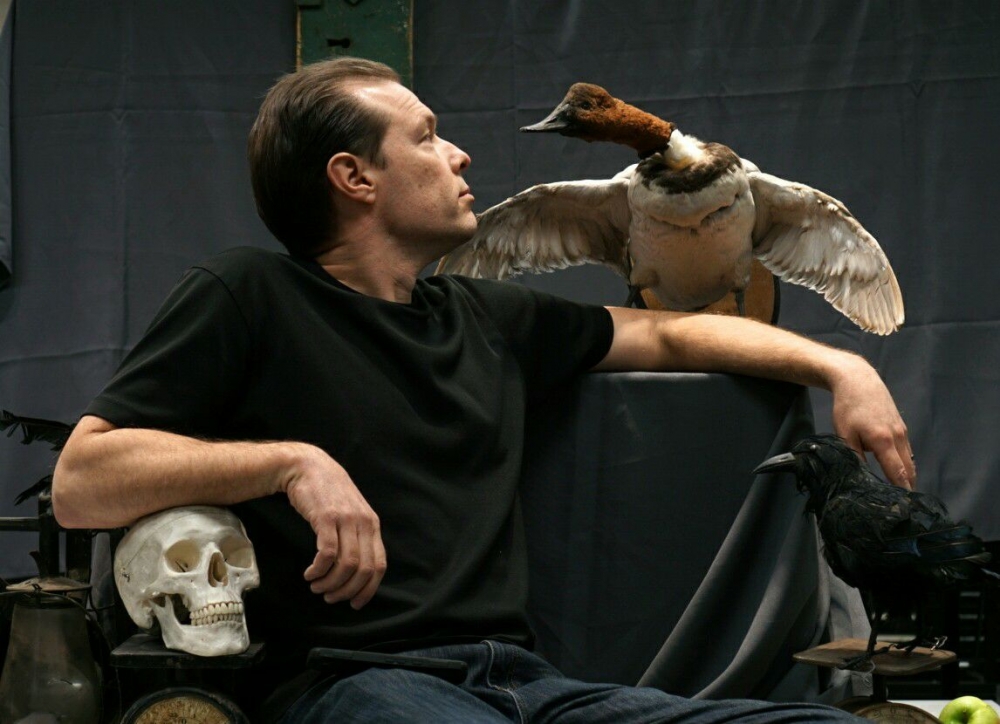
6) Is there a routine you go through when you create a piece?
The less obvious one is that I clean my studio before I begin. It is as if I am cleaning out the cob webs in my mind. Starting fresh! I also make my own surfaces and I prep those before I begin. During the process of painting I block out the world by putting on head phones and listening to my favorite music, pod-cast, documentary, etc… By listening to something I am distracted from my painting or drawing just enough so that I don’t get lost in details and overwork the piece.
7) Do you work directly from first hand, sketches, or photos?
I work from both life and photos. I paint 2 times a week from life. (Teaching Demos) My personal studio work however is mostly from photo. I have never worked from a sketch.
8) What made you start to study faces/faces with hands?
Most of my ideas are discovered by accident. The way I work can be described as organized chaos. My discoveries arrive through experimentation and play. I am searching for various ways of abstracting and reorganizing the figure. With this in mind, I begin cutting and pasting on the computer (a digital collage). I never know how the final image will look. I merely let the process of cutting and pasting naturally unfold. Unfortunately one side effect to working this way is that I have a lot of half finished ideas that never see the light of day.
9) How do you see your work developing in the future?
All of my paintings and drawings are derived from the creative act itself (The act of digitally assembling/collaging the figure) therefore this question impossible to answer. However I hope that my work become less focused on one portrait with a shallow or empty background. I will soon be attempting to compose multiple figures in a more complex and abstracted scene.
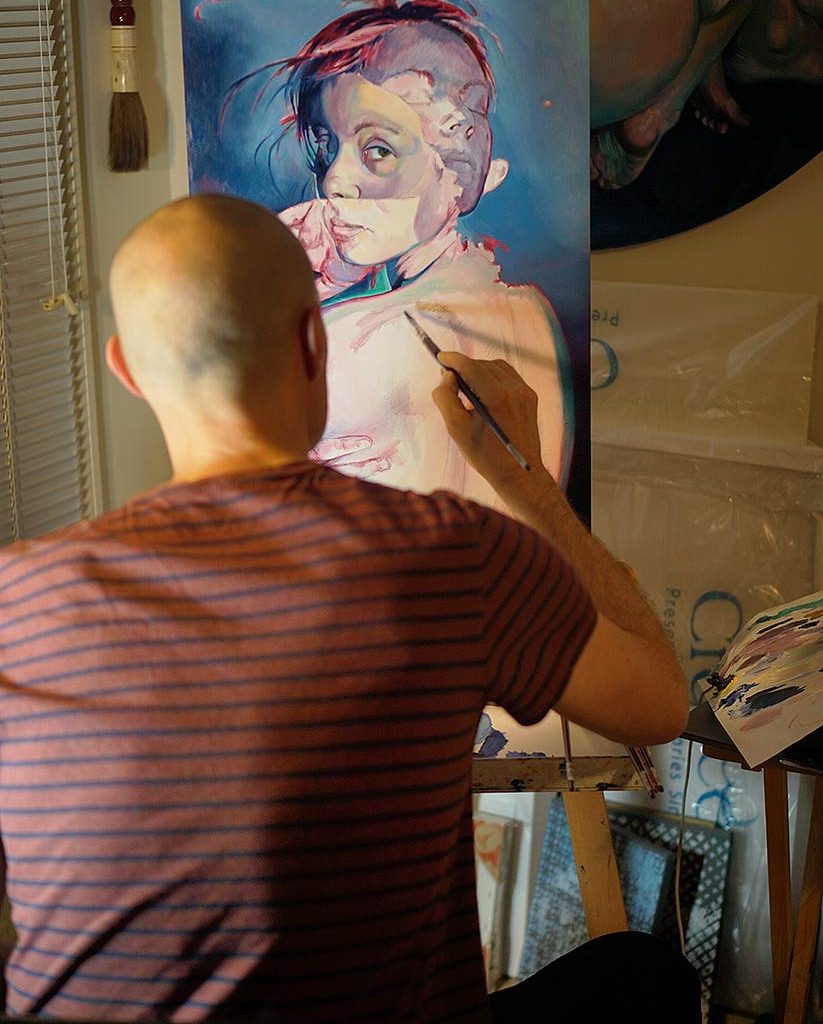
10) What is your preferred scale and why?
Another great question. I don’t have a preferred picture plane ratio or size, however I try to paint and draw the figure life sized if I can. The objective and practical reason is that a larger figure/face is easier to paint and achieve the level of detail I am going for. The second more subjective reason is that a life sized figure maintains the illusory character of a painting more naturally. Larger or smaller figures appear as pictures or illustrations to me where a life-sized figure allows me to engage with the figure in an immediate and visceral way.
11) Who would you see as your influences?
My main influences are figurative artists. Here is a short list, by no means complete, but I trust it will give you a more complete idea of who I look at.
Contemporary: Vincent Desiderio, Francis Bacon, Ewan Uglo, Allysa Monks, Jenny Saville, Tony Oursler, Lucian Freud, Jules Kirschenbaum
Art Historical Influences: Caravaggio, Dorothea Tanning (later work from the late 50’s to 60’s) Edwin Dickinson, Giovanni D Tiepolo, Pontormo
12) Is there a contemporary artist that you admire in particular?
The artist I admire the most is my former teacher, Jules Kirschenbaum. He was a great painter and professor. He deserved more recognition during his life time.
13) Would you be able to describe the process of creating “Her Echo Her Shadow”?
This piece was created the same way as I described above. I start with a digital collage on the computer. However this time I used images from two photo sessions I had with two different models and started experimenting by overlaying them together in one composition. I had never done this before and had no idea how the piece would turn out, or if I would produce anything worth of painting. This piece is a perfect example of the way in which I experiment and play during the creative process. I will never make anything unique unless I am willing to fail. If you go to my Instagram account you can see the underpainting. https://www.instagram.com/p/BYZlrMkgZt6/
14) What do you feel is your most successful piece to date?
The one I am working on currently of course. 🙂
